Newton Heath were formed at the Lancashire and Yorkshire Railway Company's Carriage and Wagon Works, on North Road in the area known today as Monsall. Overseen by the works supervisor, Fred Attock (a Liverpudlian), the club would play their earliest matches in unknown colours. No records exist, but in the early days of the association game, teams were often identified by the caps or sashes they would wear on the pitch rather than any specific team uniform.
In 1879, a year after the club were founded, Attock presented the players with a set of quartered (a style which, confusuingly, would now be refered to as "halved") jerseys in gold and green, the corporate livery of the railway company. Players had to provide the other items of kit themselves, however.
One of the earliest known photographs is from the mid 1880s and is of an early club captain, Sam Black. He is wearing the jersey with long white "knickerbockers" and black "stockings". The jersey bears a badge on the left hand side, which Black received when he was one of four ‘Heathens’ called up to represent the Manchester & District FA in 1884. It was common for district and international players to wear the badge of their local association or home country on their club shirts during this era, and for these "quartered" shirts to be worn in variations by players on the same team - some having green on the left and gold on the right and others having the colours on the opposite sides. In the early days of football, there was ironically very little uniformity in the uniforms:
In 1879, a year after the club were founded, Attock presented the players with a set of quartered (a style which, confusuingly, would now be refered to as "halved") jerseys in gold and green, the corporate livery of the railway company. Players had to provide the other items of kit themselves, however.
One of the earliest known photographs is from the mid 1880s and is of an early club captain, Sam Black. He is wearing the jersey with long white "knickerbockers" and black "stockings". The jersey bears a badge on the left hand side, which Black received when he was one of four ‘Heathens’ called up to represent the Manchester & District FA in 1884. It was common for district and international players to wear the badge of their local association or home country on their club shirts during this era, and for these "quartered" shirts to be worn in variations by players on the same team - some having green on the left and gold on the right and others having the colours on the opposite sides. In the early days of football, there was ironically very little uniformity in the uniforms:
Here is a colour representation of that kit - which was probably worn with several combinations of black, white and navy knickers and stockings - minus the badge:
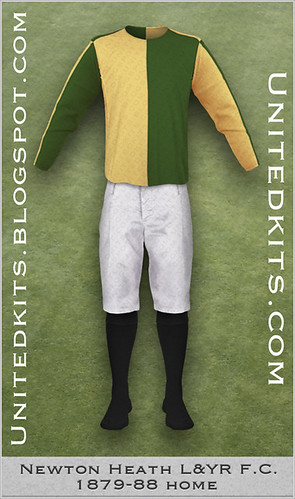

During the early years of association football, all teams were required to keep a set of "change" shirts (most commonly white) to be used in case of a colour clash. However, it was the home team who were required to change their kits in these circumstances, rather than the away team.
Possible change kit used by Newton Heath during this period (as with the home kit, they would have been worn with the same combinations shorts and socks):
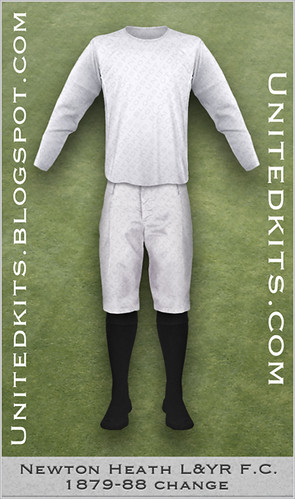

Newton Heath historian Brian Landamore informs me that in 1888, a handbook for the Manchester and District Football Association stated that Newton Heath were wearing red and white, although (according to Gary James' Manchester A Football History) as entrants for the 1887-88 Manchester Cup, they were still listed as playing in green and gold. It's probable that they switched colours in the summer of 1888, although no photographic evidence is known to exist. I have assumed that the jerseys were in a similar style to that worn by Black in the earlier photo and that the same rules applied to the shorts and socks:
The reasons for the change in colours can only be guessed at, but one theory is that the club simply updated them in line with the railway company who had discontinued the use of green as livery for their stock in 1883 and had opted instead for black exteriors with red and white lining.
In early 1890, the Heathens won the Manchester Cup for the third consecutive year and they were photographed with the trophy the following September. This is the earliest known photo of the team:


By this time the players were wearing what would more properly be described as "shirts" rather than "jerseys" and they seem to have settled on one colour for the knickers and socks, which we believe were navy:
Another photograph survives from the following season. Taken around March 1892, the players appear in quartered jerseys once more, albeit again in a slightly different design, along with the now familiar navy shorts and socks:
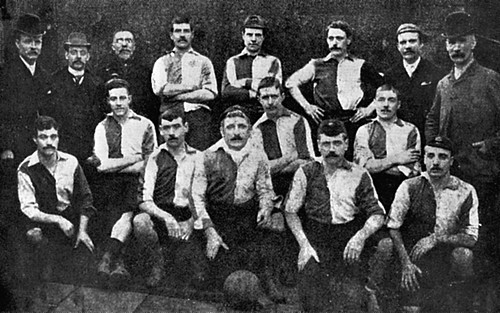

League football was beckoning...

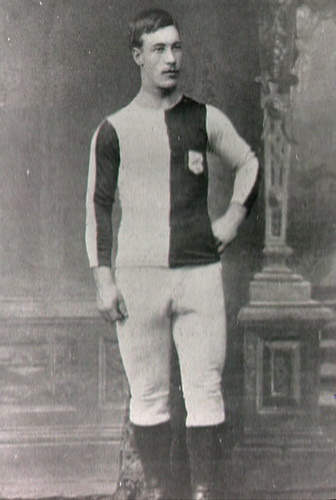

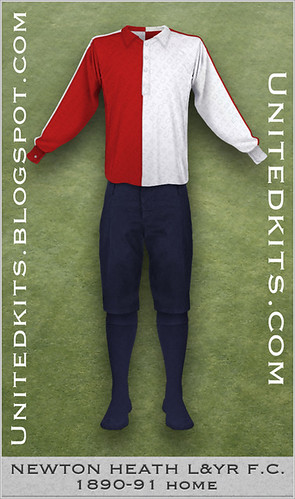
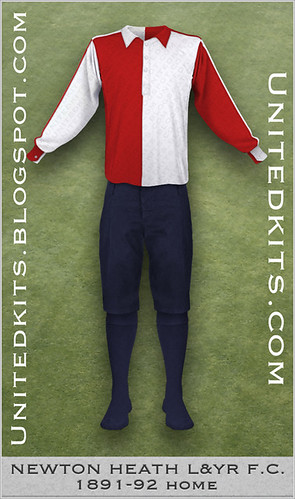
No comments:
Post a Comment